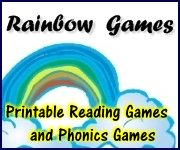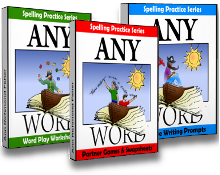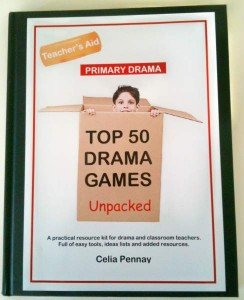Writing Mystery Stories: The Best Mystery Writing Tips and Tricks for Kids
Writing mystery stories with kids is one of the clasroom's least writing mysteries! Au contraire! Writing a mystery story is one of the most enjoyable ways to improve writing skills. This genre has all the elements of great fiction that students love: fascinating, interesting characters(just like them!), an intriguing puzzle (that's not TOO hard to solve!), and exciting suspense at every turn (to keep the reader turning pages!). I developed the following simple-to-use mystery writing lesson plans to help my niece with an English assignment. We had so much fun with conspiracy, characters, and clues around the kitchen table that we began writing mystery chain stories!
I developed the following simple-to-use mystery writing lesson plans to help my niece with an English assignment. We had so much fun with conspiracy, characters, and clues around the kitchen table that we began writing mystery chain stories!
Teaching Mystery Writing for Kids: A Mystery Writing Workshop
Step 1: Start with the main character.The best main characters are based on yourself! Have students select a few of their own personal traits and physical characteristics that would work well for the protagonist. Here are some ideas for consideration:- Describe your individual body size and shape, hair and eye color, and other physical traits unique to you. Perhaps you are slender and petite, a brunette with bangs and a ponytail, brown eyes and a sparkling smile.
- Dress your character in your favorite, most comfortable clothes. Maybe you're the jeans and T-shirt type.
- List your favorite school subjects and all things you do well. Maybe you're a whiz in Spanish or French class, which helps you translate mysterious notes. Or perhaps you're a member of the school's track team, which helps you speed away from evil clutches!
- Describe things you don't do well, and include them in your character's makeup. Perhaps you have a dickens of a time reading maps, and that gets you into a mysterious predicament!
Step 2: Place your character in a descriptive, interesting setting.Choose one you know well, such as school, home, or a neighborhood hang-out. For example, you could describe the living room of your apartment, filled with cozy couches, chairs, and magazines, and you find something mysterious and unusual among the sofa pillows. Or you could set the story at school and discover that something is missing from a classroom. Here are some ways to help you focus sensory detail upon a living room setting:

- What does your character see? The pile of newspapers on the rug, the shadows outside the window? In that stack of week-old papers, might there be a clue?
- What does your character hear? The ticking of the wall clock, traffic in the street, footsteps on the porch? Might the footsteps be connected to the shadows outside the window?
- What does your character smell? A strange fragrance wafting near the front door? What does that scent have to do with those shadows or the footsteps?
- What does your character feel? The breeze through an open window? What's puzzling about that open window?
- What does your character taste? Coke and cookies from a secret admirer? But why?
Step 3: Create an intriguing story with a specific puzzle to solve.Your character needs something very specific and very mysterious to happen in order to solve the puzzle. Perhaps the gift basket of double-chocolate chip cookies arrived on the front steps as you saw mysterious shadows at the window. The basket contains a cryptic note! Even though you're a whiz in French class, you can't translate these strange sentences!

Step 4: Build up the tension to keep the story exciting and suspenseful. Here are several ideas for building tension and intrigue:
- The main character comes close to solving the puzzle, but fails a few times, and then finally finds the answer to the mystery.
- The main character gets into trouble and has a hard time getting out!
- The main character's weakness interferes with solving the mystery, such as a fear of heights.
- More items are lost, stolen, or mysteriously arrive.
- More strange notes turn up with more strange clues.
- Adults don't believe the main character's claims of an unfolding mystery, so she has to solve it herself or with friends.
Step 5: Include some exciting cliffhangers to keep the story thrilling.Here are a number of ideas for thrills and chills:

- The main character is alone in a dangerous place.
- The main character faces the villain.
- The main character is in trouble and no one believes her.
- The main character is trapped or hurt.
- The main character will lose something very important if she can't save herself.
Step 6: Solve the mystery with a relief-filled conclusion.Wrap up the puzzle and have the main character become a hero or experience positive changes. Try these ideas:
- The main character rescues someone.
- The main character solves the puzzle and reveals surprising details about the mystery that no one else expected.
- The main character overcomes obstacles to solving the puzzle and grows and changes through her courage.
Step 7: Share the polished mini-mysteries!Allow kids to read their stories aloud, challenging classmates to solve the mystery along with the main character!
Writing is no mystery when kids are engaged in writing mystery stories! Use this step-by-step process to create conspiratorial suspense, characters, and clues! Enjoy yourselves!
Return from Writing Mystery Stories to Creative Writing Topics
Return from Writing Mystery Stories to Creative Writing Ideas and Activities
Helping You Write Across the Curriculum!
copyright 2009-2013 www.creative-writing-ideas-and-activities.com
Our Most Popular Pages
5. Writing a Personal Narritive
10. Elements of Persuasive Writing
Recommeded Resources:
AnyWord(TM) Spelling Practice Series!
Worksheets, games and activities to use with any spelling words. Three volumes in all!
Stop Essay Pain!
LitWorks.com
Resources to help students prepare for literature examinations.
Teach Kids Drama!








